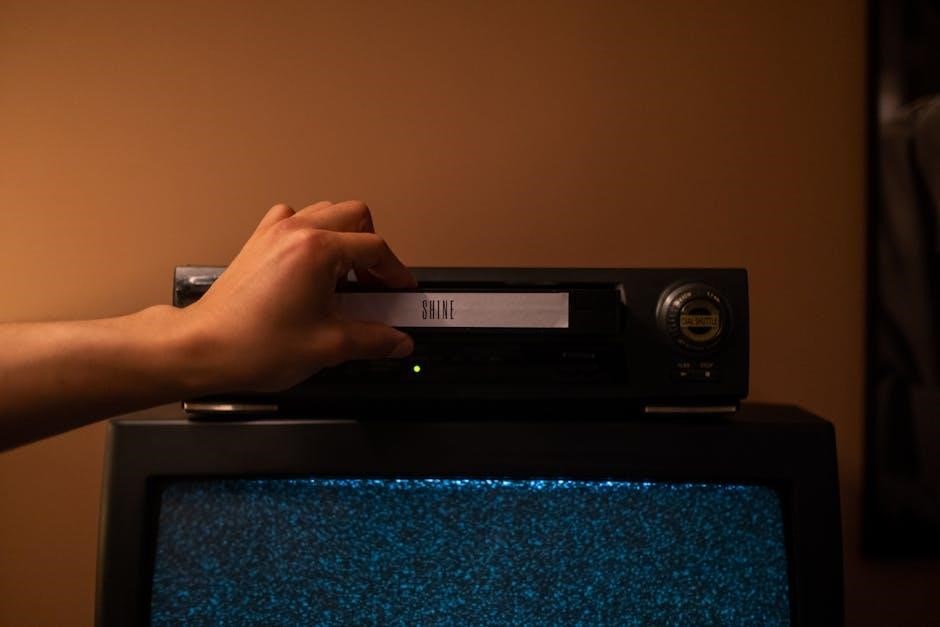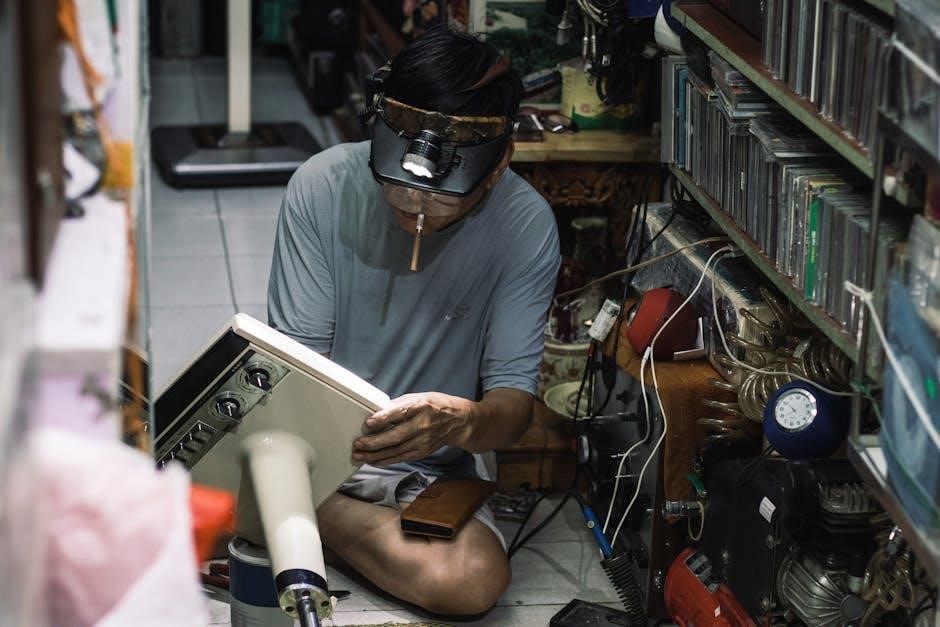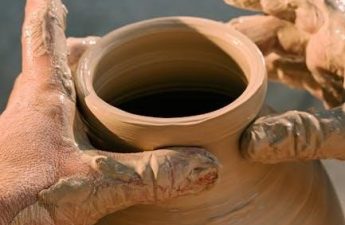Manual Lymph Drainage (MLD) is a gentle, non-invasive massage technique developed by Dr․ Emil Vodder to enhance lymphatic circulation․ Understanding contraindications is essential for safe practice․
Definition and Purpose of MLD

Manual Lymph Drainage (MLD) is a specialized, light-touch massage technique developed by Dr․ Emil Vodder․ It involves gentle, rhythmic strokes and skin-stretching movements designed to promote the natural circulation of lymphatic fluid․ The primary purpose of MLD is to assist the lymphatic system in removing excess proteins, toxins, and water from tissues, thereby reducing swelling and enhancing overall lymphatic health․ By stimulating the lymph nodes and vessels, MLD helps restore the body’s natural drainage processes, particularly in cases of impaired lymphatic function․ It is widely used to alleviate conditions such as lymphedema, edema, and post-surgical swelling, while also supporting immune function and overall well-being․ The technique is characterized by its gentle and non-invasive nature, making it suitable for various therapeutic applications․
Benefits of MLD in Promoting Lymphatic Health
Manual Lymph Drainage (MLD) offers numerous benefits for promoting lymphatic health by enhancing the natural circulation of lymphatic fluid․ It effectively reduces swelling, alleviates lymphedema, and supports the immune system by facilitating the removal of toxins and proteins from tissues․ MLD also improves circulation, aiding in the delivery of oxygen and nutrients to cells․ Regular practice can boost overall well-being, enhance skin health, and reduce inflammation․ Its gentle, non-invasive nature makes it suitable for various conditions, including post-surgical recovery and chronic lymphatic disorders․ By stimulating lymph nodes and vessels, MLD plays a vital role in maintaining lymphatic function and fostering a balanced, healthy immune response․ It is particularly beneficial for individuals with compromised lymphatic systems, offering a therapeutic approach to restore and optimize lymphatic flow․


Understanding Contraindications for MLD
Contraindications for MLD are conditions where the therapy might worsen health․ They guide therapists to avoid or modify treatments, ensuring safe and effective lymphatic care for clients․
Definition of Contraindications and Their Importance

Contraindications for Manual Lymph Drainage (MLD) are specific conditions or situations where the therapy may be harmful or ineffective․ They are crucial to ensure safe practice, preventing complications and optimizing outcomes․ Understanding contraindications helps therapists avoid exacerbating existing health issues, such as acute infections or cancer, where increased lymph flow could be detrimental․ By identifying these restrictions, professionals can modify treatments or avoid them entirely, safeguarding clients’ well-being․ Proper assessment and adherence to contraindications are vital for ethical and effective lymphatic care, ensuring that MLD benefits rather than harms individuals seeking therapy․
Difference Between Absolute and Relative Contraindications

Absolute contraindications for Manual Lymph Drainage (MLD) are conditions where the therapy is strictly avoided due to potential harm․ Examples include acute infections, active cancer, and severe kidney dysfunction․ These situations require complete avoidance of MLD to prevent worsening health outcomes․ Relative contraindications, however, are conditions where MLD may be risky but not entirely prohibited․ These include chronic conditions like lymphedema or pregnancy, where therapy can be adapted with caution․ Understanding this distinction is crucial for safe practice, as it allows therapists to make informed decisions․ Absolute contraindications prioritize client safety, while relative ones require careful assessment and modification․ This differentiation ensures MLD is applied appropriately, balancing benefits and risks for optimal care․

Absolute Contraindications for MLD
Absolute contraindications for MLD include acute infections, active cancer, and severe kidney dysfunction, where the therapy could worsen health outcomes․ These conditions require complete avoidance of MLD․
Acute Infections and Fever
Acute infections and fever are absolute contraindications for Manual Lymph Drainage (MLD)․ During an active infection, the lymphatic system is already overwhelmed, and MLD could exacerbate the condition by spreading pathogens through the body․ Raising lymph flow in such cases might lead to systemic complications, as the body’s immune response is already strained․ Additionally, fever indicates an underlying illness that requires medical attention rather than lymphatic therapy․ Performing MLD during acute infections could hinder recovery and worsen symptoms, making it crucial to postpone treatment until the infection has resolved and the client is fever-free․ This ensures the safety and effectiveness of the therapy․
Active Cancer or Malignant Tumors
Active cancer or malignant tumors are absolute contraindications for Manual Lymph Drainage (MLD)․ MLD can inadvertently dislodge cancer cells, potentially spreading them through the lymphatic system and worsening the condition․ The lymphatic system plays a key role in cancer metastasis, and manipulating it during active cancer stages could accelerate tumor spread․ Additionally, cancer treatments like chemotherapy or radiation may weaken the body, making it unsafe to perform MLD without medical clearance․ It is crucial to avoid MLD in such cases to prevent complications and ensure patient safety, allowing medical treatments to take precedence․ Always consult with healthcare professionals before considering MLD for clients with cancer history or active malignancy․
Severe Kidney or Renal Dysfunction
Severe kidney or renal dysfunction is an absolute contraindication for Manual Lymph Drainage (MLD)․ The lymphatic system plays a critical role in filtering toxins, which are then processed by the kidneys․ If kidney function is severely impaired, the body’s ability to manage these toxins is compromised․ MLD could overload the system, leading to a buildup of harmful substances․ Additionally, the kidneys are responsible for maintaining fluid balance, and manipulating lymphatic flow in such cases may exacerbate edema or fluid retention․ Performing MLD on individuals with severe renal dysfunction could worsen their condition, making it essential to avoid this practice․ Medical clearance is required before proceeding with any lymphatic therapy in such cases to ensure safety and prevent further complications․

Relative Contraindications for MLD
Relative contraindications require caution, as MLD may not be suitable for all conditions․ These include chronic edema, pregnancy, and certain medical conditions needing professional assessment before treatment․
Chronic Conditions Like Lymphedema or Edema
Chronic conditions such as lymphedema or edema are considered relative contraindications for MLD, requiring careful assessment․ Lymphedema, a permanent swelling condition, often benefits from MLD when performed by a trained therapist․ Edema, caused by fluid retention, may also respond positively to MLD, but caution is needed to avoid exacerbating the condition․ These conditions highlight the importance of tailoring MLD techniques to individual needs․ MLD can help reduce swelling by promoting lymphatic flow, but improper application may worsen symptoms․ Therefore, professional guidance is essential to ensure safe and effective treatment․ Chronic conditions often require a lifelong management plan, including MLD, compression garments, and exercises to maintain lymphatic health․
Pregnancy and Post-Surgical Recovery
Pregnancy and post-surgical recovery are considered relative contraindications for MLD, requiring careful consideration․ During pregnancy, hormonal changes and increased fluid volume may necessitate modified techniques to avoid complications․ MLD can be beneficial in reducing swelling, but it should only be performed by a trained therapist familiar with prenatal care․ Similarly, post-surgical recovery involves cautious use of MLD to promote healing without interfering with the body’s natural repair processes․ Timing is critical, as MLD should not be applied too early or near surgical sites․ Both conditions highlight the need for tailored approaches and professional guidance to ensure safety and effectiveness․ Proper assessment and medical clearance are essential to avoid adverse effects and optimize outcomes for clients in these situations․
Other Medical Conditions Requiring Caution
Certain medical conditions necessitate caution when applying MLD, even if they are not outright contraindications․ Chronic illnesses like diabetes, heart failure, or autoimmune diseases require careful assessment․ For instance, MLD should be avoided in areas of active inflammation or where skin integrity is compromised, such as open wounds or eczema․ Clients with a history of blood clots or venous insufficiency should be treated with extreme caution to prevent dislodging clots․ Additionally, conditions like thyroid dysfunction or neurological disorders may affect lymphatic function, requiring adjusted techniques․ It is crucial to consult medical professionals and tailor MLD sessions to individual health statuses, ensuring safety and efficacy․ These conditions underscore the importance of thorough client evaluation and personalized treatment plans․
Proper assessment and understanding of contraindications are vital for safe MLD practice․ Ignoring these guidelines can lead to serious health complications, emphasizing the need for cautious, informed treatment approaches․
Importance of Proper Assessment Before MLD
A thorough assessment before MLD is crucial to identify contraindications and ensure safe treatment․ This involves evaluating medical history, current health status, and physical condition․ Assessing for acute infections, cancer, or kidney dysfunction helps prevent complications․ Proper evaluation allows therapists to modify techniques or avoid risky areas, ensuring the therapy benefits the client without harm․ It also builds trust and ensures personalized care tailored to individual needs, making MLD both effective and safe․ Regular monitoring during sessions further enhances safety and effectiveness, adapting to any changes in the client’s condition․

Final Thoughts on Safe and Effective MLD Practice
Safe and effective MLD practice hinges on understanding contraindications and adhering to proper protocols․ By recognizing both absolute and relative contraindications, therapists can avoid adverse outcomes․ Regular training and updates ensure expertise, while open communication with clients builds trust and safety․ Tailoring sessions to individual needs maximizes benefits․ MLD, when performed correctly, offers significant health advantages, making it a valuable therapeutic tool․ Continuous education and adherence to guidelines are essential for maintaining high standards of care․ Ultimately, prioritizing client safety and well-being ensures the effectiveness of MLD as a healing modality․



